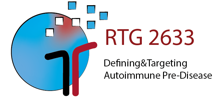Kaan Ersoy
Investigation of the local and systemic complement activation in bullous pemphigoid
Description: Bullous pemphigoid (BP), the by far most frequent autoimmune subepidermal blistering disorder, is characterized by the deposition of autoantibodies against BP180 (type XVII collagen; Col17) and BP230 as well as complement components at the dermal-epidermal junction (DEJ). Of note, the vast majority of BP patients exhibit C3c deposition along the DEJ, suggesting that complement-dependent pathway activation contributes to lesion formation. In fact, the detection of C3 by direct immunofluorescence (IF) microscopy of perilesional skin is a highly valuable diagnostic marker of all pemphigoid diseases (PDs). Treatment of BP is still based on long-term use of systemic or topical corticosteroids that are associated with a high number of relapses and considerable adverse effects. Among the innovative treatment concepts, targeting complement activation appears to be an attractive approach based on the data obtained in mouse models of PDs. While ample data are available about the relevance of complement activation in various mouse models of PDs, studies on complement activation in BP patients are scarce and the mechanisms of complement activation are incompletely understood. The aim of this study is to provide a detailed picture of local and systemic complement activation in BP patients. In addition to delineating the complex network of complement activation in BP skin, we are also interested in studying the systemic complement activation. Comparisons will be made with site-, age-, and sex-matched controls. Results of this study will help to better understand if the pathogenic relevance of complement activation in BP occurs in the skin, circulation, or both.

- People
- Doctoral Candidates
- Merabell Adem
- Katja Adriany
- Farbod Bahreini
- Estelle Bergmann
- Swayanka Biswas
- Jana Buhre
- David De Luca Laredo
- Kaan Ersoy
- Ferdinand Gebauer
- Sen Guo
- Veronika Hartmann
- Michelle Hein
- Luise Janusch
- Maj Jäpel
- Anna Knauer
- Valentin Kneitz
- Maximilian Lahmer
- Wing Yu Lee
- Daniel Mehlberg
- Sahar Mehrabani
- Afsaneh Mehrpouyan
- Sadegh Mousavi
- Milica Novovic
- Justus Ohmes
- Bianca Opelka
- Colin Osterloh
- Cristian Papara
- Tina Rastegar Lari
- Rochi Saurabh
- Alessia Maria Sbaraglia
- Jovan Schanzenbacher
- Mareile Schlotfeldt
- Carolin Schmidt
- Solveig Lea Schmidt
- Leon Schmidt-Jiménez
- Nora Schoell
- Salomini Sinnathurai
- Sarah Stenger
- Chiara Walczyk
- Nele Wellbrock
- Julia Wimmer-Gross
- Natalia Zappe
- Jianrui Zheng
- Luca Zillikens
- Carla Zünkeler
- Principal Investigators
- Associated Scientists
- Administration
- Doctoral Candidates




